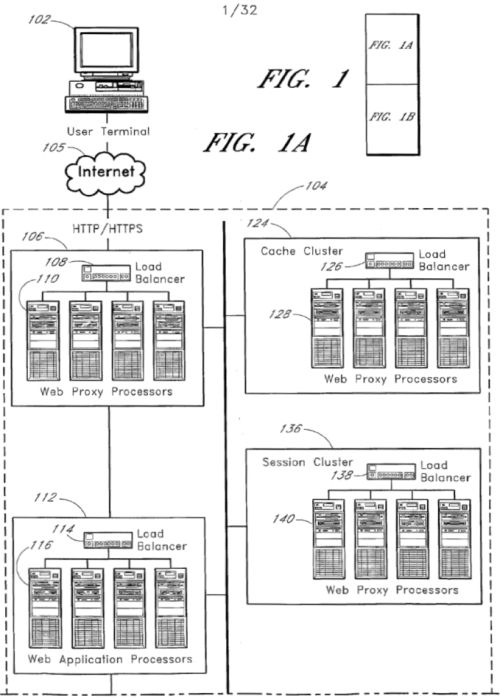This case is interesting for developers of online systems for selling, for example, event tickets. The basic question was whether providing a ticket sale system based on a specific queuing mechanism solves a technical problem. However, the decision also concerns whether non-technical features have to be considered regarding the assessment of novelty.
Here are the practical takeaways from the decision T 0552/14 (Queue message/TICKETMASTER) of 12.1.2021 of Technical Board of Appeal 3.5.01:
Key takeaways
Notifying a customer having requested a resource, such as an event ticket or tickets, whether the resource is likely to be available when the request is serviced is an organisational matter and thus not technical. Moreover, queuing per se is considered an administrative (or abstract mathematical) concept.
Whether non-technical features may be ignored for assessing novelty is left undecided.
The invention
The Board in charge summarized the subject-matter of underlying European patent application as follows:
1.1 The invention concerns a method of processing electronic queue data and providing queue messaging over a network. The idea is essentially to notify the customer having requested a resource, such as an event ticket or tickets, whether the resource is likely to be available when the request is serviced. The estimate is based on the number of requests in the queue and historical queue abandonment rates (and certainly also the available quantity of the resource in question). Based on the notification, the customer can decide to abandon or stay in the queue.

Figs. 1 and 1A of WO 2006/102354 A2
Here is how the invention was defined in claim 1:
-
Claim 1 (main request)
A method of processing electronic queue data, the method comprising:
receiving in a queue a ticket-related request for a resource from a first user;
determining or estimating the number of ticket-related requests that are in a first electronic queue;
based at least in part on the number of the ticket-related requests that are in the first electronic queue and historical queue abandonment data, selecting a notification-type regarding the queue to be provided to the first user that has a ticket-related request in the queue; and
transmitting a notification corresponding to the notification-type to a terminal associated with the first user that has a ticket-related request in the queue, wherein the notification type includes an indication to the user that the requested resource will not be available when an estimate indicates the requested resource will not be available when the first user's ticket-related request is serviced.
Is it patentable?
The first instance examining division rejected the present application because it would not solve a technical problem. The Board in charge generally agreed to this assessment:
2.1 The Board agrees with the examining division that a method of processing queue data comprising receiving a ticket request, estimating whether the requested ticket will be available when the request is serviced, and notifying the user if it is estimated that the ticket will not be available, does not on its own solve a technical problem. This subject-matter is, as the examining division said, an organisational matter.
2.3 (...)
Although queues may have technical applications, the act of queuing per se is an administrative (or abstract mathematical) concept. Thus, it follows that improving such a non-technical activity, by allowing it to be performed more efficiently, is not a technical problem.
Notably, the first instance examining division did not apply the well-established COMVIK approach (see T0641/00) but rejected the present application due to lack of novelty. In more detail, the examining division ignored the non-technical features of the claimed subject-matter and took only into account the technical features of claim for assessing novelty:
3.1 The examining division argued that the lack of technical contribution over the prior art (a notorious computer system) resulted in a lack of novelty (Article 54(1) and (2) EPC). As support for this approach, the examining division referred to decisions G 2/88 (Friction reducing additive), T 172/03 (Order management/RICOH), and T 154/04 (Estimating sales activity/DUNS LICENSING ASSOCIATES).
While the Board in charge agreed to the result of the examining division on the merits, it expressed some concerns whether the approach of the examining division to reject the application based on a lack of novelty was correct. Specifically, the examining division justified its reasoning by referring to three decisions, which appear to imply that only technical features may establish novelty:
3.1 The examining division argued that the lack of technical contribution over the prior art (a notorious computer system) resulted in a lack of novelty (Article 54(1) and (2) EPC). As support for this approach, the examining division referred to decisions G 2/88 (Friction reducing additive), T 172/03 (Order management/RICOH), and T 154/04 (Estimating sales activity/DUNS LICENSING ASSOCIATES).
3.2 The cited decisions indeed seem to suggest that only technical features can establish novelty. However, the individual statements made in these decisions have to be seen in the context of the decision as a whole and not just in isolation. None of the decisions applies the "approach" to a computer-implemented invention.
However, the Board came to the conclusion that from none of the three cited decisions is could be generally deduced that only technical features were to be considered for the assessment of novelty. G 2/88 only referred to the specific example of a use claim
3.3 G 2/88 includes the following statement:
"a claimed invention lacks novelty unless it includes at least one essential technical feature which distinguishes it from the state of the art".
The statement was made in the specific context of use claims where the only novel feature lay in the purpose of the use. The Enlarged Board discussed the difference between a purpose having a technical effect, and a purpose that merely existed in the mind of the person carrying out the invention, and was therefore subjective rather than objective. While the former conferred novelty on the known use, the latter did not. The Enlarged Board of Appeal did not consider whether objectively distinguishing features involving non-technical aspects, for example computer-implemented method steps, could establish novelty over, say, a computer.
3.4 In T 172/03, the Board stated that the patentability of an invention, for which inventive step was a requirement, had to arise from features and aspects of the invention from which a technical solution to a technical problem could be inferred and which were thus of technical character (point 3).
This statement seems to suggest that novelty, which is also a patentability requirement, can be based only on technical features.
(...)
Nevertheless, the case in T 172/03 was decided on inventive step (Article 56 EPC). The Board did not elaborate further on the question of "technical novelty".
3.5 In T 154/04, the Board summarized the case law on computer-implemented inventions. It was said that non-technical features "as such" did not provide a technical contribution to the prior art and were thus to be ignored in the assessment of novelty and inventive step (point 5(f)). However, also in T 154/04, the case was decided on other grounds than novelty.
Hence, the Board concluded that none of the three decisions could support the approach of the examining division with respect to disregarding non-technical features for the assessment of novelty. Unfortunately, the Board did not decide on this issue due to potential implications on other aspects of the EPC and, as outlined above, applied the well-established COMVIK approach to reject the application based on lack of inventive step:
3.6 The question of "technical novelty" is complex, and has potential implications on many areas of patent law, such as the assessment of the same invention in Article 87 EPC, as well as added matter under Articles 76 and 123(2) EPC.
In the present case, the Board does not need to decide on this issue, because the notorious computer system is clearly prior art under Article 54(2) EPC. Therefore, the case can be decided on inventive step.
More information
You can read the whole decision here: T 0552/14 (Queue message/TICKETMASTER) of 12.1.2021
The content of this article is intended to provide a general guide to the subject matter. Specialist advice should be sought about your specific circumstances.


